I know that it was the bicycle, not the automobile, that first replaced the horse as a personal means of transportation. I had never thought much, however, about the fact that it was revolutionary in a very different way.
So here is some fascinating information I uncovered while exploring the history of the bicycle. It was still believed in the late 1800s that women were constitutionally weak creatures, a condition that caused them to tire quickly when they walked. The problem was, however, their clothing, not their constitutions. In 1888 The Rational Dress Society, a British suffragette organization used the bicycle as its symbol to protest against fashions of the day. It was possible for women’s undergarments to weigh more than seven pounds. Some of their clothing was actually weighted and they were still wearing hooped skirts and corsets. Such clothing restricted movement as well as breathing. In fact, the corset should have been more properly called a straitjacket. Women who dressed comfortably were considered lewd and dangerous and comfortable, loose clothing was a must for cycling. The potential for freedom of movement of the body as well as freedom of movement from place to place led to freedom of thought, and it was some of history’s first women cyclists who became political activists. These women were responsible for many freedoms we now take for granted, including the right to vote. Heated controversy arose from the belief that the bicycle promoted immodesty in woman and would harm their reproductive systems and could ultimately lead to death. It was believed that a woman riding a bicycle was an assault on the moral fabric of society, particularly if she were unaccompanied or unchaperoned. Women could be sexually aroused by riding, thus leading to the habit of masturbation. Because of this concern, one could buy a "hygienic bicycle seat withy a special recession for a woman’s genitalia. However, any respectable woman would consider riding a bicycle to be utterly unacceptable, even immoral, in spite of the "hygienic" seat. It was most clearly a threat to the very moral fiber of decent society. Bicycles were revolutionary with regards to women’s fashion. Cycling challenged traditional gender norms, and women who cycled redefined femininity, female beauty and sexuality. Women began to consider bicycles as freedom machines because they experienced personal mobility and the thrill of speed. They were instrumental in changing society’s ideas of acceptable female behavior and dispelled myths of helplessness and fragility. My exploration of the bicycle led me to the story of an American woman named Annie Londonderry Cohen Kopchovsky who in 1894 became the first woman to ride around the world. Peter Zheutlin, her great-grandnephew, wrote the book Around the World on Two Wheels documenting the story of his aunt: “On June 25, 1894, Annie Cohen Kopchovsky, a young mother of three small children, stood before a crowd of 500 friends, family, suffragists and curious onlookers at the Massachusetts State House. Then, declaring she would circle the world, she climbed onto a 42-pound Columbia bicycle and “sailed away like a kite down Beacon Street. Fifteen months later one New York newspaper called it 'the most extraordinary journey ever undertaken by a woman'." "The trip was reportedly set in motion by a wager that required Annie not only to circle the earth by bicycle in 15 months, but to earn $5000 en route as well. This was no mere test of a woman's physical endurance and mental fortitude; it was a test of a woman's ability to fend for herself in the world." "Annie turned every Victorian notion of female propriety on its ear. Not only did she abandon temporarily her role of wife and mother, but for most of the journey she rode a man's bicycle attired in a man's riding suit. She earned her way selling photographs of herself, appearing as an attraction in stores, and by turning herself into a mobile billboard by renting space on her body and her bicycle to advertisers eager to benefit from this colorful spectacle on wheels." "Outlandish, brash, and charismatic—a master of public relations, a consummate self-promoter, and a skillful creator of her own myth—Annie was a woman of boundless chutzpah. Indeed, as Annie Cohen Kopchovsky reinvented herself as a new woman—the daring globetrotter and adventurer "Mlle. Annie Londonderry"—she became one of the most celebrated women of the gay '90s. Yet until now her remarkable story has been lost to history.” (Peter Zheutlin) Praise for Around the World on Two Wheels: “[T]hanks to Peter Zheutlin, Annie Londonderry Kopchovsky will be remembered as a woman who transcended the limitations of her time and displayed independence and bravery, making an important contribution to Jewish women’s history in particular, and feminist history in general.” ~ The Jerusalem Report I ride a motorcycle. I wonder what they would have thought about that? Until next time, Ingrid Ingrid Kincaid is an internationally known storyteller, teacher and spiritual mentor. She is an intuitive reader of ancient runes. She gently shows her clients how to tap into their own inner wisdom by weaving together creativity, spirituality and ancient knowing. Ingrid is available for interviews, private consultations and group presentations. You can contact her at [email protected].
0 Comments
Ior carries me to the salty, ever-moving, great oceans of water that encircle the globe. It opens the way for me to experience the World Serpent, Jormungand, one of the three greatly feared and loathed offspring of the Wolf Chieftess and the Trickster god.
Ior speaks to me of borders and thresholds, of ambivalence and androgyny, of single lines that demarcate and writhing serpentine bodies that can exist on both sides at once. Ior holds the essence of dual nature, of ‘both and’ and ‘neither nor’. Jormungand, the androgynous World Serpent thrashes and coils in the Midgard ocean causing destruction and devastation. Her absence would cause an even greater catastrophe than his presence does. A deep relationship with Ior creates a place of balance, a place from which we can learn to come to terms with the extreme and destructive forces of nature and not always fight against what’s happening. It’s true that many lives are lost, not just human, and great destruction occurs in the face of hurricanes or tsunamis or violent storms at sea and we of course are saddened and stunned by the losses. However, the huge upheavals on the earth, the forest fires, the earthquakes, the erupting volcanoes, aren’t about us, nor are they bad or evil. They just are. Sometimes daffodils bloom and gentle rains fall and sometimes a great avalanche thunders down the mountain. The World Serpent Jormungand is daughter son to Angrboda and Loki, sister brother to Hela and Fenrir. The three siblings were stolen from their mother by the high gods and cast away, chained and confined. But even the great powers of order cannot hold back forever the inevitable return of chaos. The Ior rune can teach you how to see the curve that exists in the seemingly straight line, how to be on both sides of something simultaneously without needing to make a choice of one over the other. Living with Ior as the ouroboros you can come to understand what it means to devour yourself by eating your own tail. Then you can know the end and the beginning as one. This is how you partake of them both. Working with Ior is about being willing to sail to the edge of the map, to the places we’ve been told cannot be known or the places we've been told we cannot go. In ancient times the mapmakers drew maps of the world as they knew it and around the edges of the map they’d write: Beyond This There Be Dragons. It was believed that if you sailed to the edge of the world, you’d fall off and there you would have to face the great dragon. Are you kept inside the realm of what’s known and what’s allowed, what’s orderly and what’s safe by the fear of meeting the dragon when you sail off the edge? You don’t have to go there alone. Journey with Ior to Jormungand. Sister brother son and daughter knows what it’s like to be cast away.
I dance with Ansuz in my relationship with words. Words are alive and have an existence separate and distinct from the way we mindlessly use them. They’re creations in and of themselves. They have a generative power. True, they may limit us when we use them to describe what we experience as reality but at the same time they have the power to change our perceptions as well as create.
The psychologist James Hillman wrote about the ‘angelology of words’. The word angel originally meant an emissary or a messenger and the Ansuz rune helps me remember the value and significance of what words carry between people. Words as well as runes are personal presences with their own gender, history, mythology and genealogy. Words and runes are about voice and sounds. How do you use your voice? It’s not a matter of whether or not you talk. It’s a matter of whether or not you use your voice to speak about things of value, and whether you use your voice to speak of things with integrity and truth. We become out of balance with Ansuz if we engage in gossip, idle and unconscious speech and lying. And once we’re out of balance with Ansuz we become out of balance with our breath because breath is the means by which we speak. And breath is about life. We no longer live in an oral culture so a good question to ask might be whether or not Ansuz can connect to our writing voice as well as our speaking voice. Ansuz is about air. Just like fish live in water, we as humans live in air. It’s easy to forget that because air is invisible. We may enter a room and say that it’s empty because we don’t see anything in it but the room is not empty. The air is there so the room is full and the air is always full of things seen and unseen. Air is all around us and air is inside of us. We are the container. We are the contained. The being of Ansuz also connects us to the ash tree, sometimes called the honey tree because it secretes a sugary substance from its bark and leaves. This honey from the ash tree, when fermented, has hallucinogenic effects on those who consume it. Called the mead of the gods it opens up the way for us not only to have communion with the gods but also to speak in their voice. It’s said that it was a custom in the Scottish Highlands for mother’s to give to their newborn infants, on the tips of their fingers, the fermented sap of the ash tree, thus linking them to the gods from the moment of their birth. How different might things be if we still followed such practices today? The presence of Ansuz may also ask you to call into question your thoughts and beliefs about the use of hallucinogenic substances in ritual. Can they, do they, connect you with the gods and the power of words to create? When we take an in-breath, do the gods of the air breathe into us at the same time? And if that’s the case, is the air we expel when we speak, also the spirit, breath and voice of the gods? Whose breath mingled with Odin’s breath when he saw the runes, grabbed them up and screamed? Is that what’s meant by a sacrifice of self to self? What is created at the time of sacrifice? Ansuz might also lead you to Bragi, the Old Nose god of poetry and eloquence who is said to have had the runes carved on his tongue. Poetry carries the magical power of words. It can touch our hearts, stir up memory and longing as well as inspire. It allows us to partake of the realm of the gods through the use of words. It was and still can be used as a memory aid to keep alive the tales of the gods, to take hold of the woven, unbroken ancestral lines that are constantly being twisted by breath.
We ate horses. In fact, clear up until the eleventh and twelfth centuries, heathen Swedes were called horse eaters. For tens of thousands of years humans have hunted and eaten horses. Some of the oldest cave paintings ever discovered in France show scenes of ritual hunting of horses for food The bond between horses and humans is ancient and runs deep. The horse was a sacred creature that carried the gods on adventures and exploits, pulled chariots across the sky and was worshiped and used in sacred ritual and fertility practices by many ancient European tribes. There were horse cults where it is said that the King mated with a sacred mare to insure the blessing of the realm. Horse penises were preserved or mummified and used as sacred objects to promote or bless fertility. It’s no surprise then that Odin who rides between the worlds on his the eight-legged horse Sleipner goes by the name of Volsi, Horse’s Penis, which is also translated The Dangler. In some cultures it is believed that centaurs came into being when the sacred horse penis mated with Mother Earth. Who are these magical creatures? The imagery of the centaur is found even among the stone carvings of the Pictish people in ancient Scotland. Our ancestors knew that sexuality, spirituality and creativity were bound together in life and that riding these energies allowed them to move between the worlds. How far can you ride the energies of Ehwaz? What boundaries could you cross? What realms of greatness are you willing to explore to become equal to yourself? Ehwaz is the rune of horse and horses, of horse and rider, of freedom and control, mastery and surrender. You can’t ride a horse by pulling back on the reins any more than you can drive a car with one foot on the break and the other on the gas. Often in a reading Ehwaz will ask the question, where in your life are you bound, harnessed or yoked to someone or something that is not your equal? It’s easy to be fooled. Both a donkey and a draft horse can pull a cart or wagon to market. But they can’t do it if they're bound together. They will only go in circles. They can walk the same road in the same direction. They can walk the road with the same intention. But they must do it separately. So ask yourself again, where in my life am I bound to someone or something that is not my equal? Where in my life am I going in circles? Who in my life do I need to disconnect myself from? Ehwaz may also show up when there’s something great and powerful trying to move you and move through you. Movement is both creative and destructive. Movement can be both frightening and uncertain. Set the fear and uncertainty aside, relax the reins and become one with the energy and ride the Ehwaz.
This rune shows up again and again, in so many readings, in so many conversations. What happens when we really tell the truth? So often I hear people say they can’t be truthful because it would hurt someone's feelings or upset someone or that their partner, family member, friend, work associate just wouldn’t understand. If you believe that, then the place you really need to start is telling the truth to yourself. Loss is always involved in compromise. Strength of convictions always demands a price. This is the story of Tyr and the wolf Fenrir, son of the giantess Angrboda and Loki, brother to the great serpent Jormungand and Hela who dwells in the realm of the dead. The story is most often told from the perspective of Tyr, the god of justice, law and upholding traditional sources of authority. In this version of the story, Tyr is a hero because he keeps chaos at bay and loses his hand to the wolf because of it. But what is also true is that he lost his hand because he lied to the wolf and tricked him into being bound with magical chains made by the dwarves. Why did he do it? Because the high gods told him to? Because he was afraid to go against traditional sources of authority? Because he believed it necessary to keep the peace? No matter the reason, Tyr suffered a loss when he compromised his role as a truth teller. No doubt he would have paid a price as well if he had refused to lie to the wolf but the price would have been different from the loss suffered from compromise. And what about the wolf? Do we ever hear the story from the perspective of the wolf or in support of the wolf? A wolf is a wolf is a wolf. It's his nature. Of course he bit off the hand of Tyr. What else would a wolf have done? Working with the spirit and essence of Teiwaz gives you the opportunity to dig around in your own issues of truth, compromise, integrity and loss. When you reflect on the story you can ask yourself, who am I in the tale? Am I the high gods, the wolf, Tyr? Am I perhaps the hand that got bit off? There is no right answer. There is no wrong answer. Only you can say what is true for you. Here is one of the many things that happen when you don’t speak truth to those around you. First you justify your withholding by saying something to the effect that speaking truthfully would cause upset or anger or conflict. Your withholding creates an energy that is ever so slight but can still be felt by the other person, even if they’re not aware of what they’re feeling. They have an animal sense that something is off and that creates an energy of distrust. They pull back from you and withhold because they sense you can’t be trusted. Once they do that, you feel it, and make the decision that you were right to not speak your truth. And then it just builds from there. All this happens on a very subtle level, in a matters of seconds, or over a long period of time. It’s not so much about what you say but rather what you don’t say. You can call upon Teiwaz to support you in living with integrity and strength of conviction, enjoying relationships based on truth telling and trust. You can ask yourself, where in my life am I compromising myself, my dreams, my health and happiness because I'm afraid to go against the high gods, or have been convinced it’s my duty to keep the order at the expense of my own truth? Teiwaz can support you in building a strong sense of self-worth so you fearlessly live your true nature.
When was the last time you woke up in the morning early enough to watch the sun rise? There was a time when all the people knew the songs of life, the songs of the seasons, the songs of the earth and moon and sun. How long has it been since you sang the sun up? What song would you sing to bring her back each morning? How do you experience the sun? Is it male? Is it female? Some of the Northern European tribes spoke about the sun as being female. They called her Sunna, the bringer of life and light, warmth and new growth. Only Sunna could melt the ice of winter. She was pulled across the sky each day in a chariot drawn by horses, Alsvith whose name means All Swift and Arvak whose name means Early Waker. She was chased by the wolf Skoll who sometimes came so close he took a bite out of her. In the very far north they knew her through the long summers when the sky never darkened and through the long winters when the sky was never light. Our ancestors in the north had a relationship with the sun that was different from people who came to conquer, a relationship different from the armies of Romans and the monotheistic priests who brought with them a religion born in the desert. Are we perhaps the first culture to fear the sun, to consider her our enemy? We shield ourselves from her in a strange and fanatic way. We smear our faces and bodies with sunscreen and believe we can spend long hours in her presence without being affected by her. We believe we can override our body’s natural warning system and suffer no harm. We don’t really know the damage caused by sunscreen. We shield our eyes from her, filtering her light through dark glass, forgetting that it’s vital to our health and well being for the full spectrum of her light to enter our bodies through our eyes. What parts of sunlight are we missing when we wear sunglasses? We no longer honor the sun. We’ve forgotten her sacred symbols and we’ve forgotten her fair name. We’ve forgotten her rituals and her songs. And few of us remember to welcome her back at winter solstice. There are too many who think only of the birth of a male child who is son to a sky god. What makes us so sure that she will always rise again? Our ancestors were not so smug. How is it that in our search for enlightenment we have forgotten to honor the sun? How is it that in our arrogance we have forgotten that she who gives us light can also blind us? Before the advent of clocks, people knew what time it was by knowing where the sun was in relationship to features of the landscape. You would have to live in a place a long time to learn where the sun would be at a certain time of day at a certain time of year. This is very different from the arbitrary time determined by clocks that doesn't relate to anything. Forming a relationship with Sowelo can strengthen your relationship with the sun and that will shift your relationship with time. Do you ever wonder where she goes at night? What do you see at sunset? Does she disappear into the earth? Does she sink down into the ocean? Who takes care of her and guards her while she's away? Have you ever dared to follow? Have you ever asked her in the morning where she’s been all night? Or why she stays away longer in the winter than she does in the summer? When Sowelo comes to you, what questions might you ask about the sun?
It's said that yew trees grow out of the mouths of the dead buried in the cemetery. Perhaps that is so. It’s common to find very ancient yews growing in church graveyards. Since they live for thousands of years, it seems more likely that the graveyard was formed around the tree. The invading Christians loved to claim for themselves the sacred hills and groves that were revered by the people of the land they were conquering. The ancient yew groves were places where sacred rituals were held, the mysteries of sex, birth and death, places where you could go to be altered by the mildly hallucinogenic, resinous vapors that are released from the tree. No yew tree should ever be considered dead. The remains of rotting trunks can be thousands of years old and then suddenly come to life again. A great deal of energy is held in the branches and that makes it possible for the tree to grow again by sending down an aerial root inside a hollow trunk or by rooting branches in the ground. So the yew tree grows again and again from its own rotted-out corpse. We all grow from the corpse. There are some who say that Odin hung himself on the World Tree Yggdrasil and their argument is that Ygg is one of Odin’s names and drasil is an old Norse/Icelandic word for horse. So perhaps the World Tree that Odin hung in was his horse but we must remember that the World Tree was there in the void from the beginning which is also the middle which is also the end and all of that was there long before Odin came on the scene. So what was the name of the tree before Odin? We might have forgotten but the Jotnir know. Some say the World Tree is an ash tree and some say the World Tree is a yew. And some might even say that the World Tree is every tree and all trees. What would you say? If you know it as the yew then you may know its connection with Eihwaz, often called the rune of life and death. If you know it as the rune of the World Tree you may also know it as the rune that will assist you in traveling to the Nine Worlds that exist in its roots. Eihwaz is the trunk with the branches growing up and the roots growing down and it is the branches growing down to become roots that send up a trunk that becomes new branches. To know this rune is to sit with your back up against a tree trunk and feel the life energy of the tree become mingled with the life energy of your body. Death is born in the middle of life and a relentless desire to say eternally youthful, to pretend we are not aging, is imagining we can avoid the second half of life. Fearing the end we forget to live. Eihwaz is a relentless reminder that no one can stop the turning of the Great Wheel. Eihwaz can be experienced as a rune of initiation. Are you willing to die to yourself so you can become something new? Have you ever worked with the rune in this way? When you come into a close relationship with Eihwaz you will be asked to consider what your beliefs are about concepts of up and down, above and below, upper and lower. Do you believe that the branches are superior to the roots, or that what’s above is good or more important that what’s below? Check and see if there are any vestiges of monotheistic religious teachings tucked away in your beliefs. When we speak about upper, middle and lower realms and the beings and the gods we imagine dwell there, do we as humans place a value judgment on the different locations? What would happen if we turned the tree upside down, turned it just like the Eihwaz rune? Then we could see that there is no difference. Those who dwell above are not somehow better than those who dwell below. The Eihwaz rune reminds us that there is no top or bottom, there is no above or below. There is constant motion. This is the case when we ponder the earth. There is no top or bottom. It just hangs in space, constantly moving. Eihwaz reminds us that there is no seen and unseen. All things are visible. We limit ourselves when we think we can only see with our eyes. Eihwaz will ask us to examine the beliefs we hold regarding the shamanic realms. Is there really a separation? When we decide to place things such as beings, gods, spirits, and creatures in the upper, middle or lower regions do we hold to the belief that they must stay there or that they always reside there? Who are we as humans to determine that? Is there a hierarchy present in who or what we decide to place where? Have you forgotten to live? What songs of renewal can you sing as willing sacrifice?
Perhaps we need to ask Surt what he has in mind at this time as things are heating up again on the earth. What new creations will arise from this global warming? To be sure, we humans have played our part in what’s unfolding but perhaps Surt has now taken over and is fanning the flames. He may even have a special agreement with Kari, the North Wind that we humans aren’t privy to.
This is the power of Cweorth, a fire so hot it burns the flesh away from bone leaving only ash. In the end, which is also the beginning according to the stories, the cyclical destruction of the cosmos will be led by Surt. It was fire in the beginning and it will be fire in the end. Kenaz is the fire inside. Nauthiz is the fire brought forth from necessity. Cweorth is the fire of what must be, destruction and creation occurring at the same time. Do you carry any of Surt’s bloodline? It shows up in interesting places. Laufy knows. She gave birth to Loki who carries the bloodline of his fire-giant father Farbauti. Sometimes it’s quite evident in humans who are glass blowers, fire fighters or blacksmiths. In the end the gods will be consumed. In the end Surt will remain. In the end there will be fire because fire cannot be destroyed. There are some things in life that need to be buried, offered up to the earth where they’re slowly broken down and used. There are some things in life that need to be burned, quickly consumed, smoke rising up, leaving only a pile of ash. When you develop a relationship with Cweoth, as well as the rune Ear, you will learn to know the difference.
We live in a world that isn’t just about us, wasn’t created for us, a world that can and just might continue on without us. It’s a world that’s more-than-human. Everything is unique but nothing is uniquely unique. Everything is individual and we humans don’t hold some special place. There is no line that divides the gods from the humans, or the humans from the rest of the world.
This is our home. We’re not aliens here. We live entirely within the great realm of all things. There’s no place to go and there’s no place we’re from. Such imaginings cause a sense of hierarchy and separation. When people talk about being from the stars or other galaxies, it’s often in that rather hushed tone of specialness. I smile and say, “That’s great! Then we must be related. I’m from the stars too. I’m from earth and in case you haven’t noticed, it hangs right in the middle of the cosmos, surrounded by stars”. We all exist in the void and the void has been there from the beginning and the beginning is also the ending because it’s a cycle, a circle, a repeat. That’s how all the holy races stand connected at the bridge. That’s how Mannaz breathes as one. We come from the great void, Ginnungagap, and the chaos caused by the coming together of Niflheim and Muspelheim. We come from that famed tree Yggdrasil in whose roots exist all Nine Worlds. We come from Audhumla, the reindeer cow who birthed and suckled the giant Ymir. We come from the places that were formed from the parts of his dismembered body. We come from the wood the gods found on the sandy shore when they formed Ask and Embla. We come from Heimdall who fathered the social order of men and who guards the Bifrost Bridge. And we’re all joined together as one. We must face and touch each other just as the two Wunjo runes do when they form Mannaz. This is the doubling of the joy. It has become quite common and popular to write about the runes and discuss them using pretentious New Age jargon. There are several online rune study communities that speak about them in the language of the self-actualized evolved perfected human universal mind Christ consciousness Buddhist enlightenment Sanskrit Akashic records inner transcending Higher Self Enlightened Being. Breathe. The runes stand alone. They’re sentient, independent spirits who don’t need to be constantly compared to other traditions or beings. So much that is written about Mannaz focuses only on the human mind with endless references to our inner Christus, our Higher Self and the need to constantly strive to become an Enlightened. The spirit of Mannaz teaches us about what it means to be a human and humanness isn’t just about the mind and intellect. We cannot separate our minds from our beautiful, perfect human bodies, from the magic and power of our sex and sexuality, from our cravings for food and pleasure, from our connection to the earth. When we try to separate the physical from the spiritual we separate ourselves from the joy. An underlying sense of dissatisfaction, depression and discontent is fed by ideas that there’s always something wrong with being human. That we’re only here to learn some lesson on our way to enlightenment, or ascension, as if there’s someplace to go that’s better or more real. Our physical bodies aren’t sinful and imperfect, corrupt and defective. We don’t need to shed them so we can evolve, ascend or become divinely enlightened. Mannaz connects us to our wholeness as humans, our sexuality, our spirituality, our creativity and our perfection. What do you believe?
We all eventually hang on the barbed arms of Ear and we must all smell death, the dire necessity, the outcome of life, over which we have no choice.
Even those who eat no flesh eventually must come to know that in the end they will be eaten. All things live because of death. Our bodies return to the ground so they can be consumed, broken down into the elements and then be reused to grow the food that feeds all things living. There is no rank in death. We may be remembered for what we’ve done during our lifetime but in the end we are of no importance other than to feed the earth. Ear is connected to Othila who reminds us that the land feeds us the bones of our ancestors. Ear is often referred to as the rune of the grave and the grave doesn't give anything back. It’s the rune of the slow process of breaking down. It’s the rune of the end result, which is also the beginning. Ear speaks to us of Hela, she who is cold and objective, she who is often considered unfair and uncompassionate. Her appearance, her very form which is half alive and half rotting flesh, reminds us that she does not hold with any kind of denial around death. It’s still a common practice in the United States to embalm bodies prior to burial. It's a costly process that uses large quantities of toxic chemicals that eventually leak their way into the ground. Embalming makes the dead body presentable, and odorless and delays the decomposition of the corpse. In some ways it’s a trickery, causing the living to imagine the person is only asleep, thus prolonging the denial of death. This rune may appear to challenge your beliefs and attitudes around the treatment of your physical body once you die. Does denial of the effects of death cause us to be out of harmony with Ear? Does this denial feed our desire to retard or somehow prevent the natural process of rot and decay? Are we afraid to look at the natural face of death? Some things need to be burned. Some things need to be offered up in high places so the birds of prey can peck and tear and eat. Some things need to be buried. Sometimes we lay the body out on the kitchen table so to speak and forget that it's supposed to be buried. Ear will remind us. When was the last time you dug deep down into the earth, below the topsoil to the place of burial? What hangs on the barbed arms of Ear? What have you been forced to offer up to the earth? |
title Photo by Amaury Gutierrez on Unsplash
IngridWriters write. Archives
January 2022
Categories
All
|
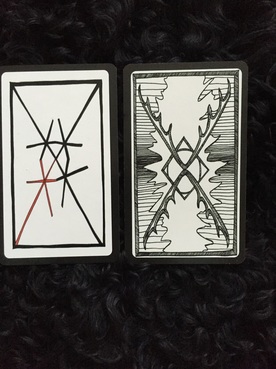
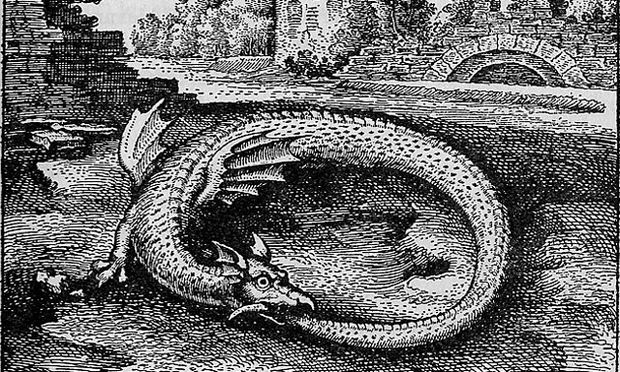
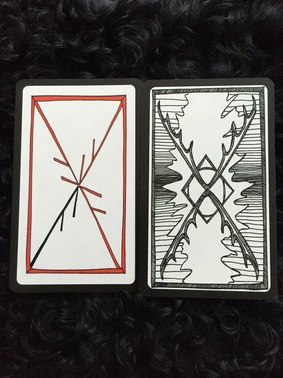
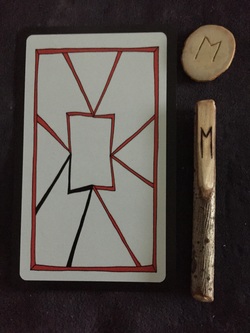
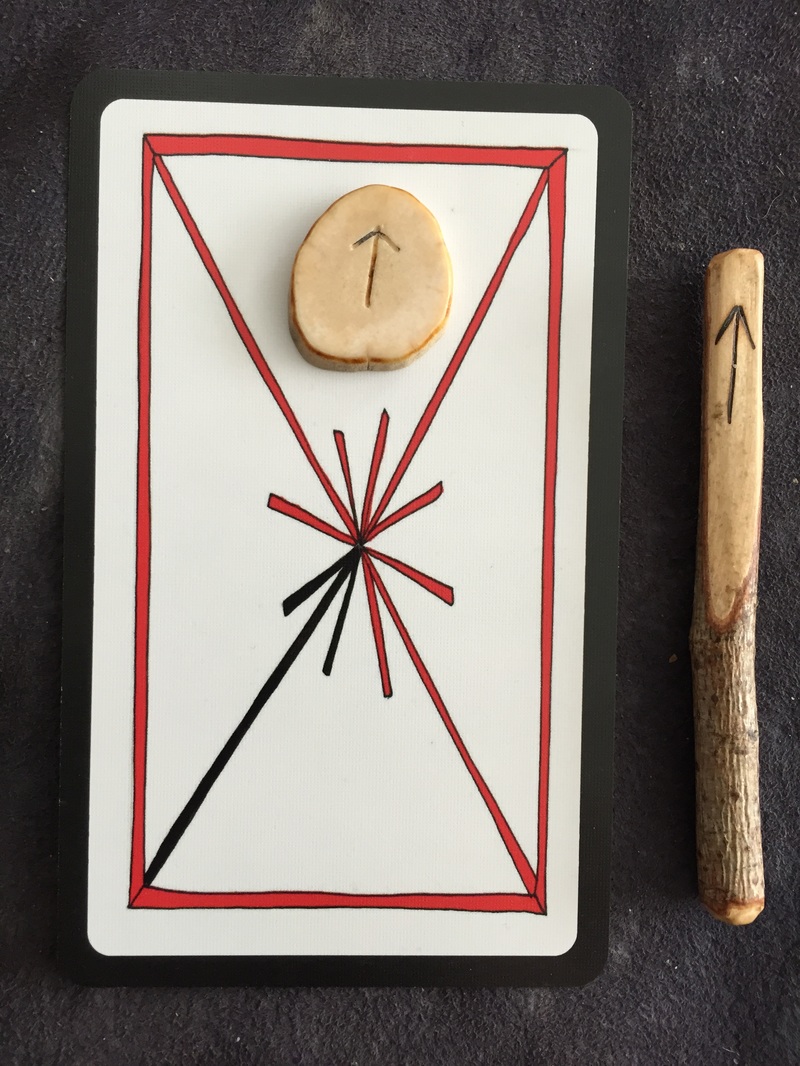
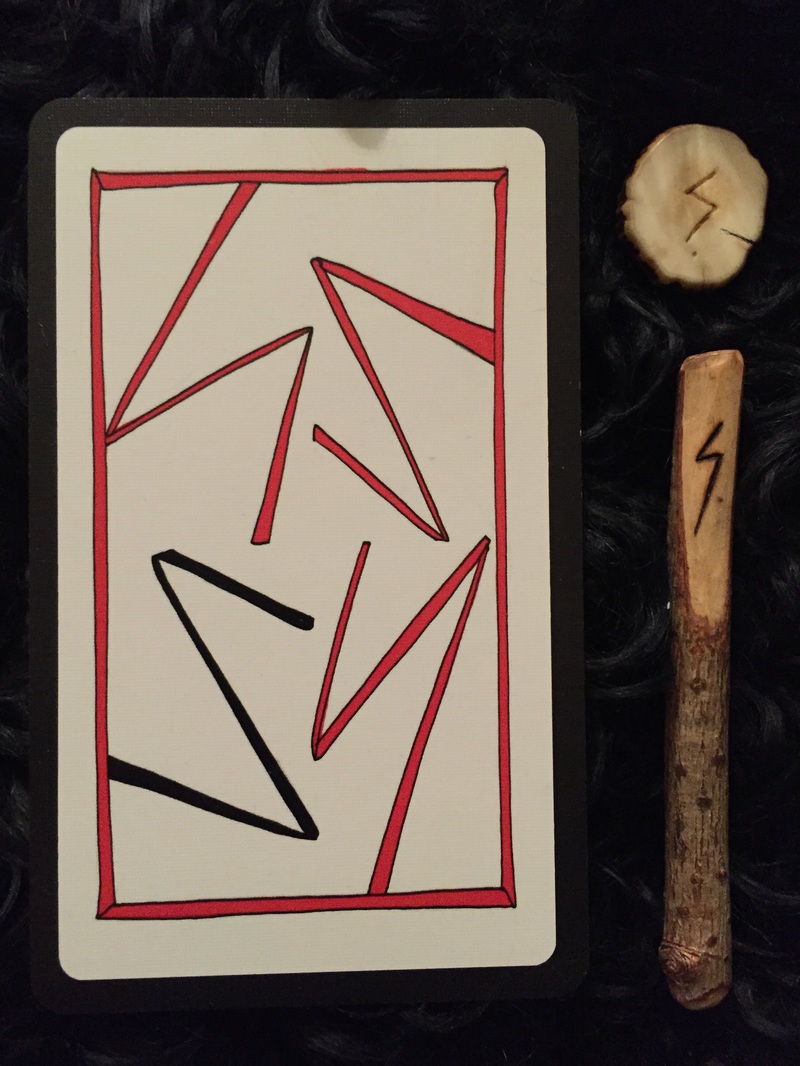
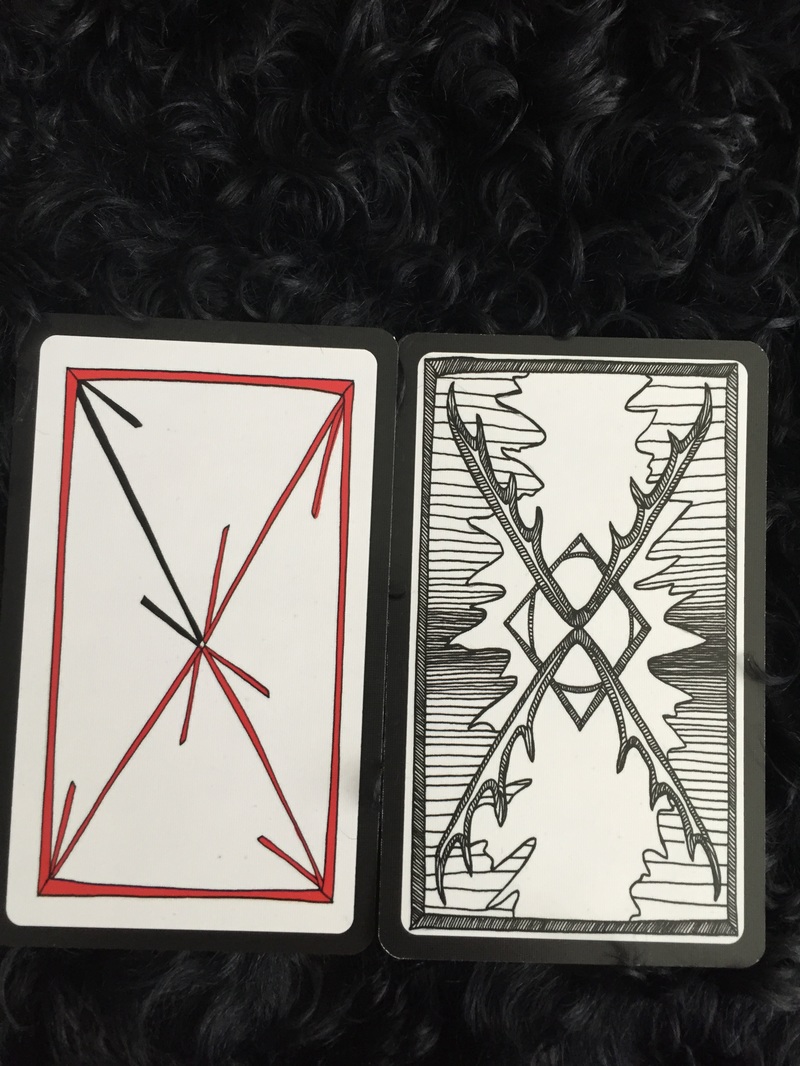
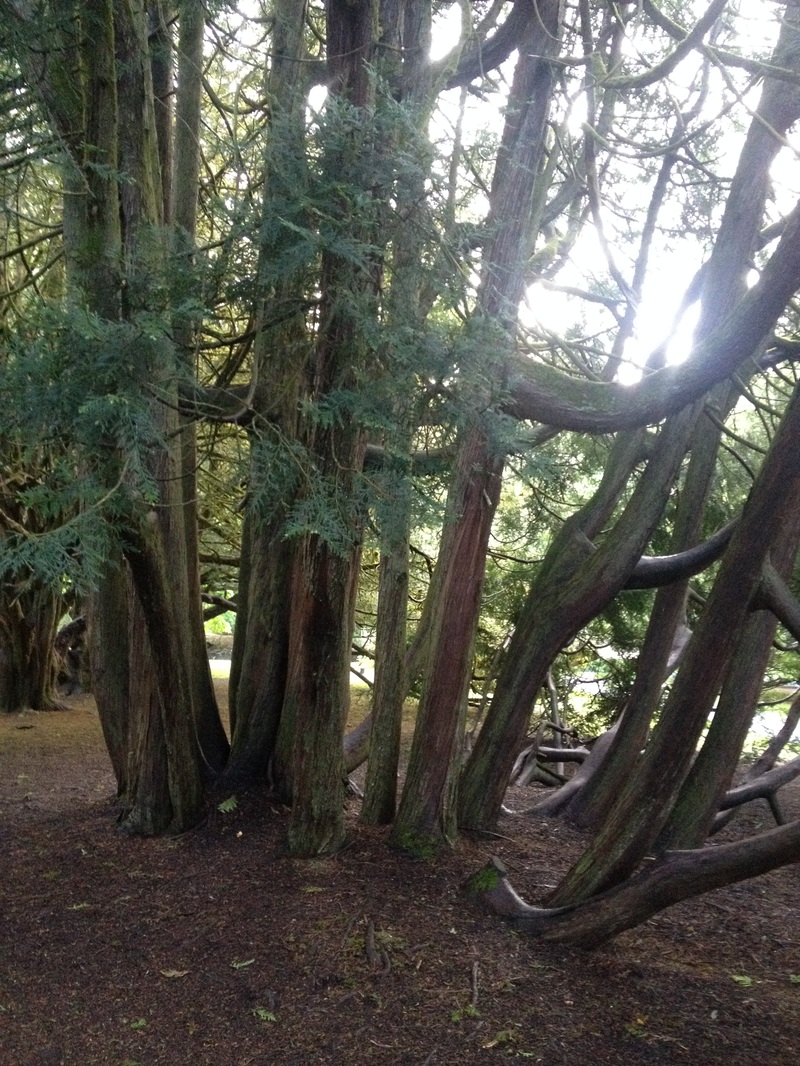
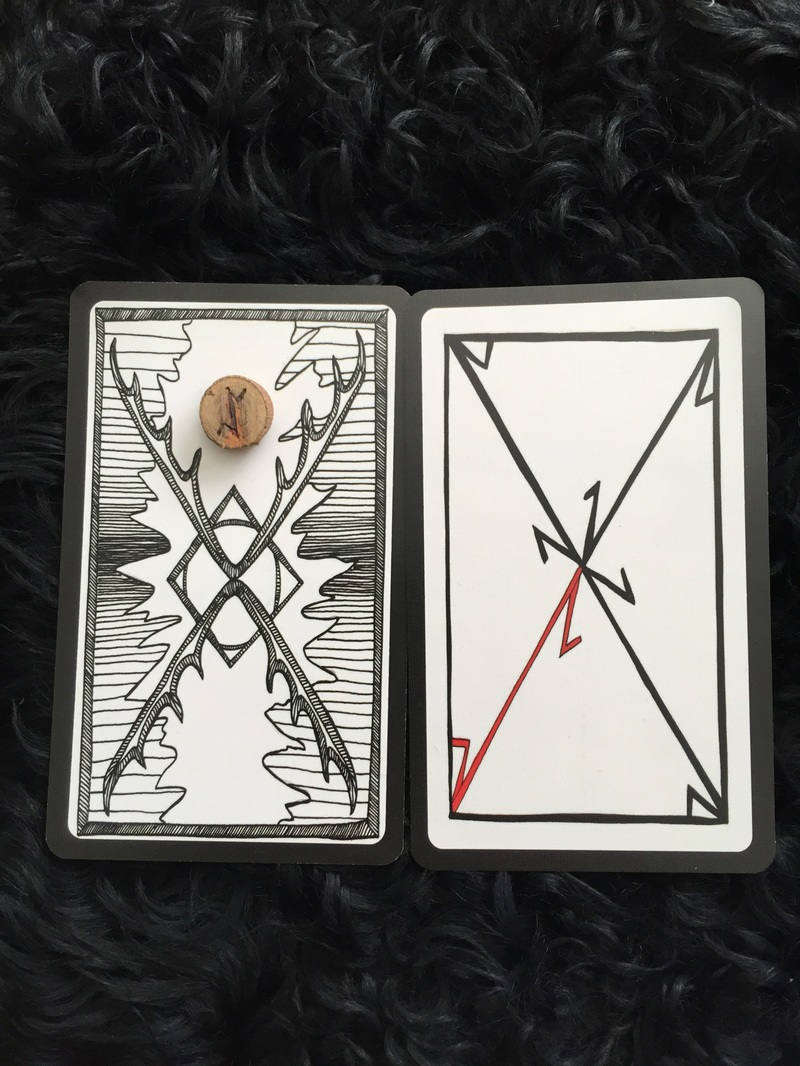
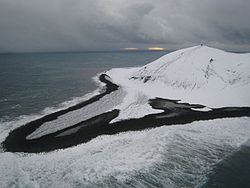
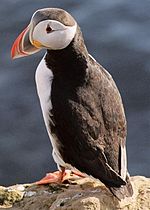
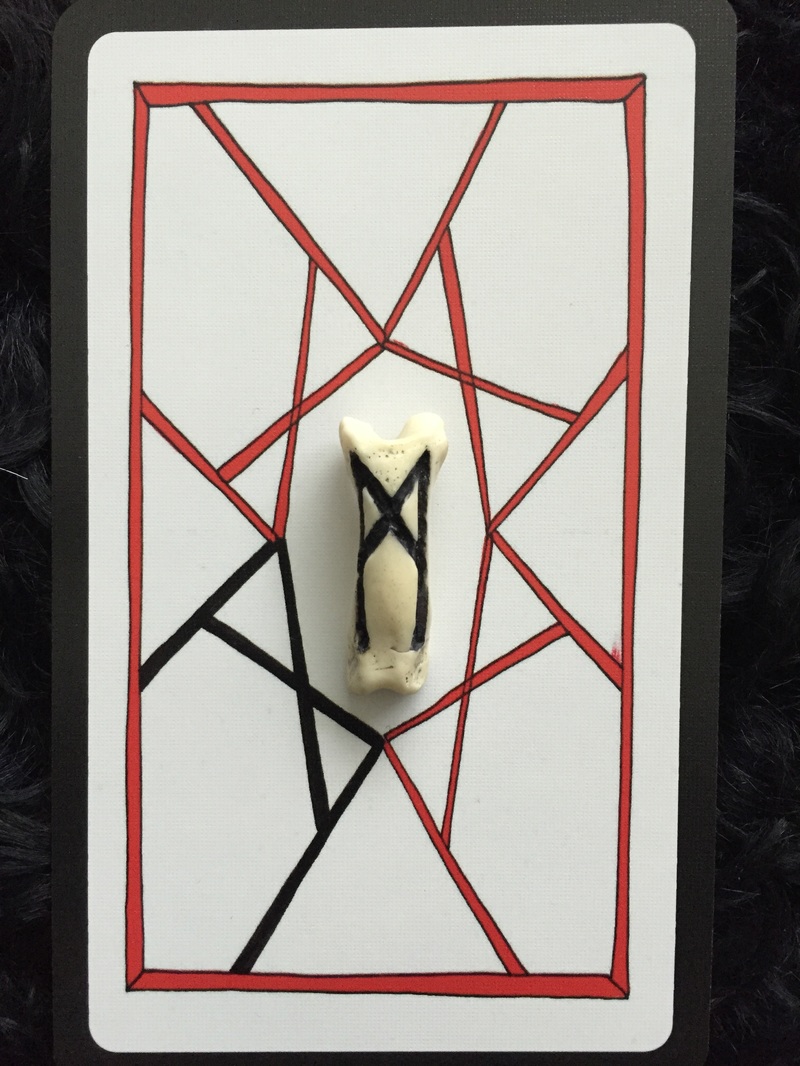
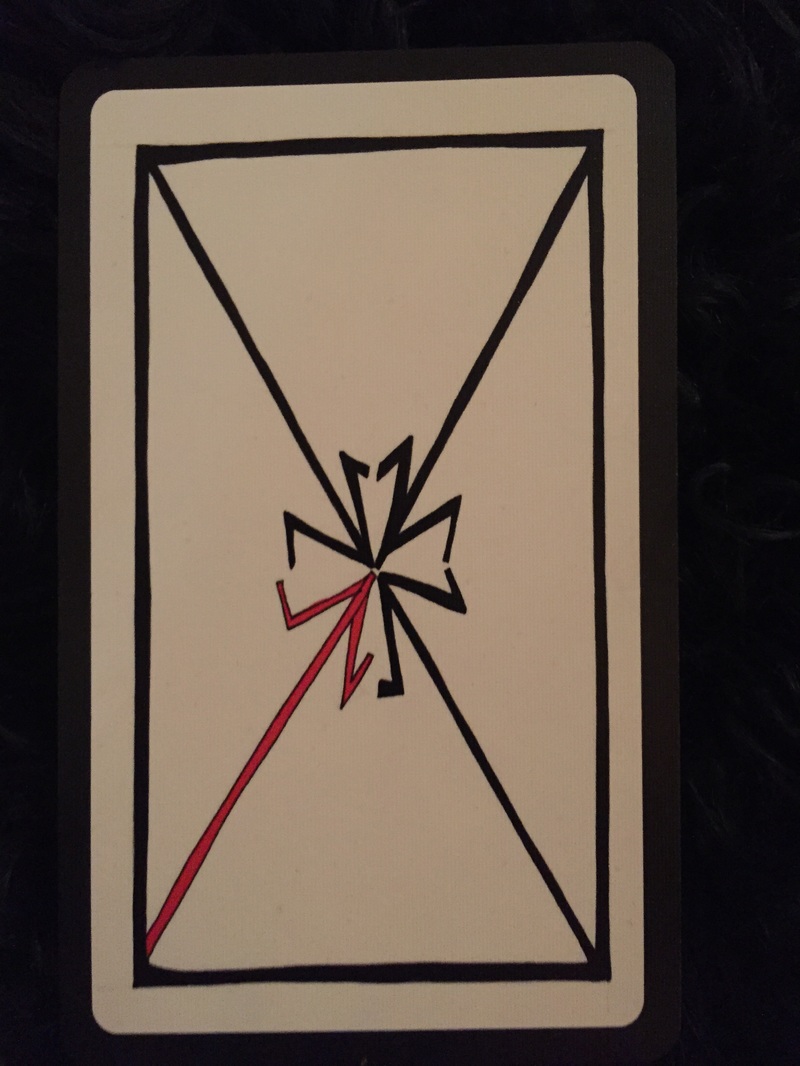
 RSS Feed
RSS Feed